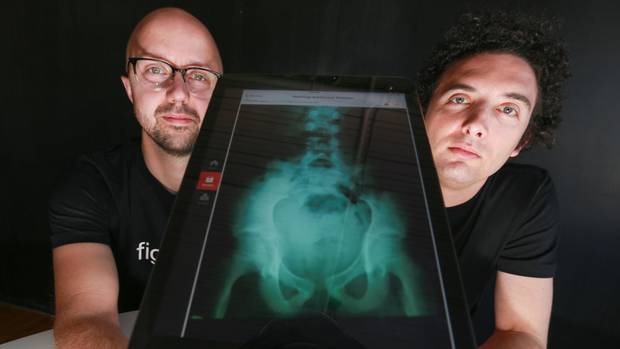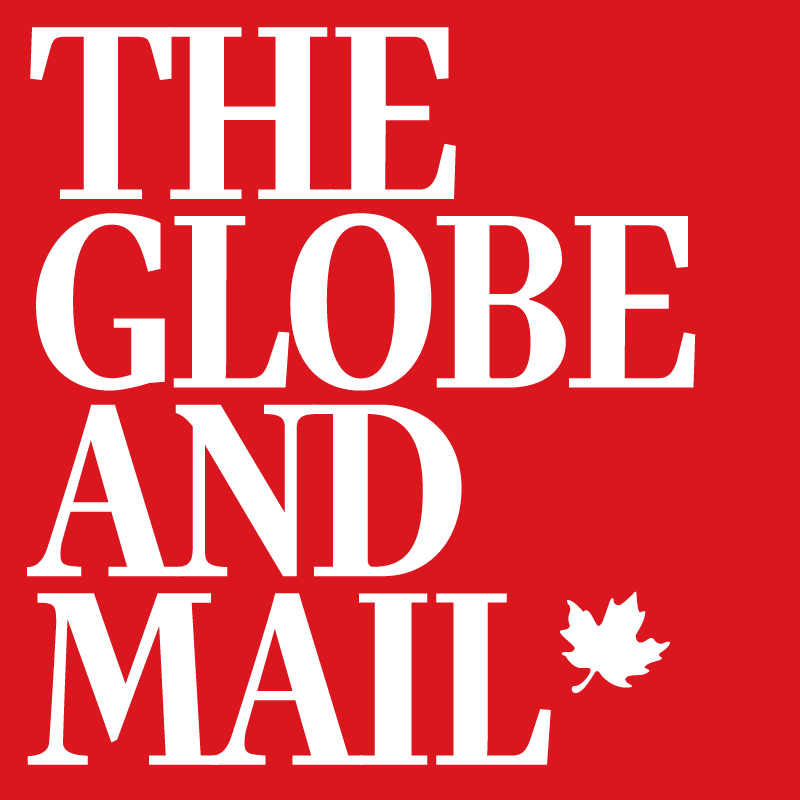Figure 1 is Instagram for doctors
Like Instagram for doctors, Figure 1 app now has 500,000 users. One billion cases viewed 18 Sep 2015.

Figure 1 Inc.’s Richard Penner, left and Gregory Levey show their medical image-sharing app Tuesday. Glenn Lowson for The Globe and Mail.
Sean Silcoff, The Globe and Mail September 18, 2015
Early this summer, a resident at Kentwood Manor Nursing Home in rural Louisiana had a leg wound that wouldn’t heal. The staff and specialists in the region were flummoxed, so nursing head Karey Thigpen turned to a social network created by Toronto startup Figure 1 Inc.
After rifling through anonymous images of afflicted patients posted by medical professionals “we found one that looked like our patient,” she said. Not only did she discover the wound was a rare condition known as Raynaud’s Phenomenon with Martorell’s Ulcer, she also learned how to treat it from the doctor who uploaded the image. “It provided insight we didn’t have and what other specialists hadn’t been able to give us,” Ms. Thigpen said. Three months later, the patient is healed.
 Stories such as this have turned Figure 1 into one of the most intriguing startups of the mobile era, and also one of the fastest growing. The two-year-old company, which has been described as an Instagram for doctors, said Wednesday it now has more than 500,000 medical professionals using the service – up from 100,000 a year ago – in more than 100 countries, with 50,000 using it daily. Members have collectively viewed shared images one billion times, and four out of 10 U.S. medical students use the service, Figure 1 says.
Stories such as this have turned Figure 1 into one of the most intriguing startups of the mobile era, and also one of the fastest growing. The two-year-old company, which has been described as an Instagram for doctors, said Wednesday it now has more than 500,000 medical professionals using the service – up from 100,000 a year ago – in more than 100 countries, with 50,000 using it daily. Members have collectively viewed shared images one billion times, and four out of 10 U.S. medical students use the service, Figure 1 says.
“These kids grew up with Facebook and Twitter, and now they’re doctors,” said Figure 1 chief executive officer Greg Levey. Now, his hope is to get tens of millions of medical professionals – from big city specialists to rural physicians in the developing world – to use the service regularly and build a powerful business around it, in part by adding a “paging” service that enables posters to reach out to approved specialists online for their opinions.
“It sounds aggressive and crazy, but we want to own health care,” he said. “We’re trying to build something massive.”
Although the company hasn’t figured out how to generate revenue, Figure 1 has raised more than $10-million (U.S.) from some of the savviest venture investors in North America, including Canadian venture capitalist Boris Wertz, Toronto-based serial entrepreneur and investor Daniel Debow, Canadian venture capital firm Rho Canada Ventures and New York VC Union Square Ventures, which backed Twitter, Etsy and Tumblr.
“When we saw Figure 1… it reminded us of the mass consumer networks we had invested in,” said Union Square partner Andy Weissman. “It feels simple – you open the app, take a photo, upload it and share. But there’s a complexity to it – it unites the collective intelligence of the medical community.”
The company grew out of a study by the company’s chief medical officer, life support specialist Dr. Joshua Landy, on mobile technology in health care three years ago. Many doctors spend their days on their feet and snap photos of patient conditions to seek input from other professionals for their diagnosis. “Why not build a social network of professionals who could share such photographs and discuss diagnoses far and wide?” he thought.
When he discussed the idea with friend Mr. Levey, a communications professor at Ryerson University, and a third colleague, programmer Richard Penner, who is now chief technology officer, they were hooked. “Richard and I dropped everything,” Mr. Levey said. “This was so meaningful and impactful, we ran with it.” The company now has 26 employees.
One of Figure 1’s advantages is that it sought extensive legal advice early on to ensure users would only share pictures that were so completely scrubbed of identifying information that there would be no privacy or regulatory issues. By removing all such red flags, they “were able to build up the service outside the system” while providing a tool that is “part of the doctors’ work flows,” said Mr. Wertz. He added that health care has been a tough sector for tech companies to crack due to extensive regulatory hurdles.
By starting with a “bottom-up” appeal to professionals rather than institutions, Figure 1’s approach mirrors the “land and expand” tactics used by Slack and Salesforce.com, said Mr. Debow, who is senior vice-president of emerging technologies with Salesforce.
“Once you have the trust of doctors… you can do all sorts of things,” he said. “Sharing images is just the start.”
Source The Globe and Mail
| Expand your clinical knowledge |
| View and discuss real-world medical cases with healthcare professionals from every specialty on Figure 1. Download on the Apple App Store. Get it it on Google Play. |
Also see
This Is What ‘Instagram for Doctors’ Looks Like. No more waiting around to publish an interesting finding in a medical journal. Lindsay Abrams in The Atlantic June 12, 2013
